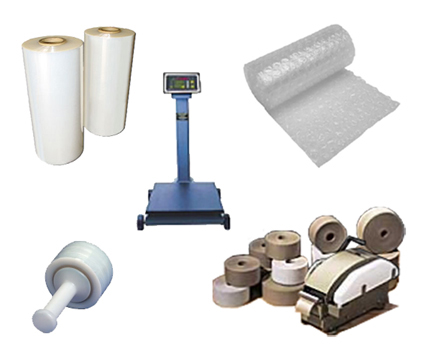 Packaging hasn’t changed all that much in the past 50 years, with cardboard and plastic playing a central role in packaging materials. But over the course of the next few decades, at least one expert says there could be radical changes ahead.
Packaging hasn’t changed all that much in the past 50 years, with cardboard and plastic playing a central role in packaging materials. But over the course of the next few decades, at least one expert says there could be radical changes ahead.
During a recent presentation at the Material Handling and Logistics Conference, in Park City, Utah, Brian Wagner, vice president of Packaging & Technology Integrated Solutions, identified 10 global packaging trends to watch for during the near future.
1. Rapidly Growing New Markets — About 70% of global economic growth will come from emerging markets, so packaging will need to be designed so that it is both appealing to new types of customers and sturdy enough to be transported to areas where poor, bumpy roads and less-than-ideal accessibility may be the norm.
2. A Tidal Wave of Data — Improved technologies means that new analytics relative to packaging will be more widely available in terms of performance, costs, customer feedback and other key data that will help guide developing packaging design and delivery strategies.
3. Consumers Will Play a Larger Role — Other technological advancements, such as QR codes, make it easier than ever for consumers to interact with product producers. With smart phones nearly universal, information such as a product’s ingredients, its sustainability and more can be instantly transmitted to customers via radio transmitters embedded into packaging and conductive links such as QR codes and social media.
4. Green Is the New Normal — The trend towards environmental sustainability will continue and those companies that are creative and can create innovative new “green” strategies with their packaging will be rewarded with increased consumer loyalty.
5. Increased Scrutiny — The flipside of the sustainability trend is increased scrutiny on the part of consumers and also legislative bodies on the types and impact of packaging and materials that are being used. Complex rules governing everything from labeling disposal could be the result.
6. Design as a Marketing Tool — The most innovative packaging will both reduce costs and increase appeal to the consumers through clever design and improved value.
7. Neuroscience as a Marketing Tool — Because science can now tell us how consumers respond emotionally and intellectually to various types of packaging, innovative designers can reverse engineer packaging that will appeal most directly to consumers. Wagner referred to this as the “science of buyology”.
8. Increased Risk — Packaging will play a role in ensuring confidence in the consumer that products are safe, have not been tampered with, and are packaged using “high integrity” materials.
9. A New Retail Paradigm — E-Commerce and offshoring are two of the fastest growing trends in retail and the consequences for packaging will be immense. Expectations of consumers will need to be balanced with how much control retailers will have over how products are being sourced, produced and shipped.
10. The China Syndrome — China, along with Russia, Brazil and India, are expected to become the biggest global markets in the coming decades due to their growing middle class. Western companies competing for dominance in these markets will need a steep learning curve about their consumers’ expectations and how those are reflected in product packaging.
If you would like to reconsider packaging materials for your company, Bahrns carries a complete line of the most innovative and cutting edge packaging products in the industry today.
